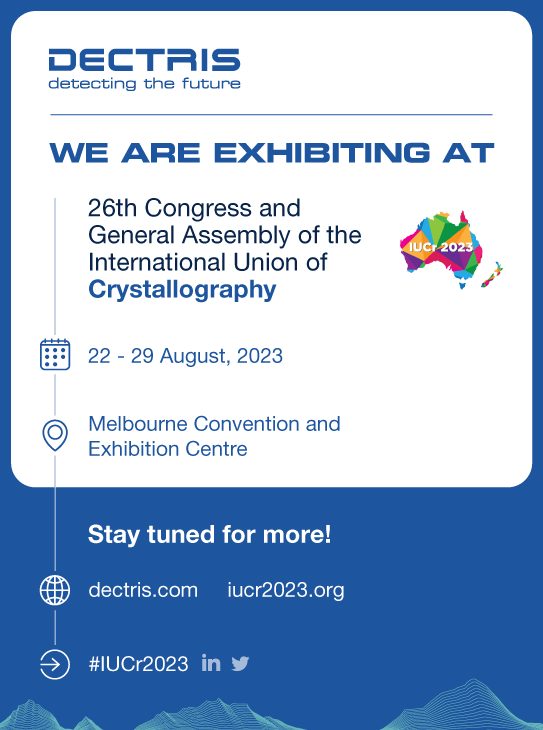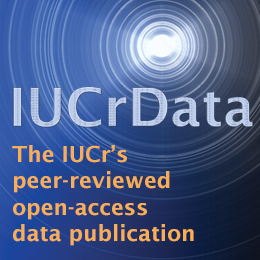
Special report
News from the Cambridge Structural Database
![thumbnail [thumbnail]](https://www.iucr.org/__data/assets/image/0019/155125/thumbnail.jpg)
An analysis in CSD-Particle: the charge on the surface of a particle is visualized. Shown on CSD Refcode QQQAUJ03 (Mossou et al., 2014).
A paper mill in crystallography — CCDC’s response
In April, a pre-print article alleging a paper mill in crystallography was published. On 28 April, we at CCDC became aware of the pre-print, made a public statement on Twitter to keep the community informed and began to investigate.
The pre-print alleges that various journals have published fraudulent publications, including crystal structures. We have found 992 structures in the Cambridge Structural Database (CSD) that are associated with publications named in the pre-print. Because crystal structure data are collected into curated databases with a standard format, we have been able to investigate quickly.
For now, we have marked the structures with an editorial note so that users are aware of them. We can also provide a complete list of refcodes on request (email [email protected]). As the CSD mirrors the published scientific literature, we continue to work with the journals that published the work in our investigation. To date, 12 of the 992 structures have been retracted because the journals retracted the associated publications.
We are following COPE (Committee on Publication Ethics) guidelines throughout our ongoing investigation. Under these guidelines, it is important to give the authors the right to reply. We also note that even if a paper is fraudulent, the crystal structure data may not be.
From our CEO Dr Juergen Harter; “Our proactive response to the paper mill allegations further underlines the quality and integrity of the Cambridge Structural Database and the validated, curated data that scientists use on a daily basis to guide their research and discoveries. Human interaction and intervention, by real people with domain expertise, clearly have a vital role to play to ensure data quality in an increasingly automated world.”
To keep updated on our investigation, check for updates in our website statement here, follow us on Twitter @ccdc_cambridge or register for our monthly email newsletter.
CCDC Engagement Grants — apply for funding to produce outreach resources
Can you inspire others with your love of crystallography? Have you got an idea for a video, social media series, game, poster or activity to get people excited about the topic?
We were excited to launch our Engagement Grants programme at the recent ECM33 meeting, as part of our charitable commitment to education in the chemical sciences.
CCDC Engagement Grants cover costs for you to produce resources or activities to increase engagement in crystallography and structural science for schools or the general public.
Key facts:
- Applicants must be over 18.
- Activities can be in a wide variety of formats and do not need to be in English.
- You do not need prior experience in creating educational or outreach resources to apply.
- We encourage people from diverse backgrounds and situations to apply.
- You can apply more than once for separate activity ideas.
- Activities must engage or inspire those not currently involved in STEM, including children, those undecided about what to study or the general public.
- Up to £2,500 per activity is available — but we aim to fund multiple impactful projects and may not be able to provide your total requested sum.
- Funds can cover licensing of software, materials and props, professional services and you and your team’s time.
Applications close on 31 October 2022 at midnight UK time.
Learn more and apply on our website here.
![[CCDCgrants]](https://www.iucr.org/__data/assets/image/0020/155126/CCDC_ENGAGEMENT_GRANTS.png)
New software to assess mechanical and chemical properties of particles
CSD-Particle software was launched in July 2022 and is available to all academics with a full CSD licence at no extra cost.
Going beyond the molecule, and the solid form, to the bulk material — CSD-Particle lets you predict or understand the molecular cause of manufacturing issues like sticking, wettability and tabletability in solid crystalline materials.
In CSD-Particle you can predict particle facets, visualize surface chemistry, charge, topology and interactions, identify potential slip planes, determine H-bond dimensionality, quantify surface chemistry and topology, and more.
Learn more and watch the 2-minute preview video here.
See all the latest updates to the CSD data and software, plus register for email updates, here.
References
Copyright © - All Rights Reserved - International Union of Crystallography









